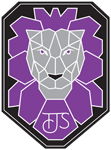At The Journey School, our mission is to provide all students with the values, skills, and knowledge needed to embark on their life-long journey to success. We use the following curriculum as our central guide for teaching these values, skills and knowledge.
English Language Arts
Groves Method: Foundational Literacy Development, Grades K-3
The Groves Literacy Framework, which was developed at Groves Academy and uses a curriculum based on the Science of Reading and is rooted in decades of literacy and brain research. We rely on this program to ensure that all students develop the beginning reading skills to become fluent readers in English.
Journeys, K – 6
Journeys is a comprehensive K-6 English language arts program. It provides an instructional system for reading both literature and informational texts, for acquiring foundational reading skills, and for developing mastery of speaking, listening and writing.
Into Literature 7 – 8
HMH Into Literature is a 6-12 English language arts program that equips students with the reading, writing, and speaking skills required for success
Spelling Workout, 1 – 8
Spelling Workout is phonics based spelling program helps students transition from basic sound-letter correlations to advanced spelling patterns. As students progress to the higher levels of the Spelling Workout student books, vocabulary and word origins become an integral part of the program. Ample practice with word lists is provided through reading selections and writing activities. Word games, riddles and crossword puzzles ensure that lessons are fun for students and encourage them towards spelling mastery.
Math
Saxon Math, K – 8
Saxon Math scaffolds instruction of each concept and continues to review information introduced earlier. This allows students the time and practice to retain math concepts to the level of mastery. In Saxon Math, concepts from every math strand are woven together and connected throughout the year. Skills or concepts are reinforced throughout the years, helping students build a strong foundation of understanding.
Science
HMH Science Dimensions, K – 8
HMH Science Dimensions empower students to learn science through self- directed exploration, analysis, and explanation. Activity-driven lessons put students in charge of their learning, while teachers guide the process and ensure mastery of standards, leading to greater student achievement.
Social Studies
HMH Into Social Studies, K – 8
HMH Social Studies is an inquiry-based social studies curriculum for Grades 6–12 that immerses students in history and gets them excited to uncover more about history. The social studies program fosters excitement and engages students by blending quality narrative with media, audio, and interactive visuals.
K – The World Around Us
G1 – Families Living and Working Together
G2 – Neighborhoods and Community
G3 – Communities, Near and Far
G4 – American States and Regions
G5 – The United States
G6 – World History
G7 – United States History – Beginnings to Civil War
G8 – United States History – Reconstruction – Present
Special Education (SPED)
What is Special Education?
Special Education is specialized instruction for the child at no cost to parents. The instruction is designed to meet the unique needs of a child with a disability. As stated by the State of Minnesota and the Federal Government, a child must meet specific criteria set by the Minnesota Department of Education (MDE) in order to receive special education services.
Students demonstrating academic, behavioral, or social difficulties may be identified for additional support through parent or teacher referral. The school may choose to implement targeted interventions to see if the student makes progress. Students suspected of having an educational disability undergo a comprehensive evaluation that identifies if they meet the criteria for a disability and what their specific needs are. Parents/families are involved in every step of the process.
At TJS, we offer a wide range of service delivery models. TJS is dedicated to providing special education services within the regular class setting whenever possible. Students may also receive small group or individual instruction or services outside of the regular classroom when necessary.

